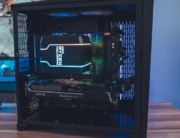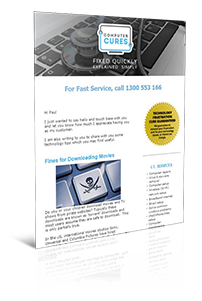Home / Handy Tips /
 More often than not, you get what you pay for. But does the saying ring true when it comes to purchasing a new laptop? Are cheap laptops worth it? Or, will you end up spending more money – not to mention time – in the long run?
More often than not, you get what you pay for. But does the saying ring true when it comes to purchasing a new laptop? Are cheap laptops worth it? Or, will you end up spending more money – not to mention time – in the long run?
In short, no. If you can afford to pay more, cheap laptops aren’t worth it. In this article, we’ll examine how we came to this conclusion in a little more detail. Let’s get started.
7 reasons you don’t want a cheap laptop
First, let’s take a look at seven extremely frustrating features that pretty much every cheap Windows laptop on the market shares. These features will drastically diminish the device’s usability, so they are worth considering before you jump on what looks like a great deal.
1. Subpar touchpad and keyboard

The majority of laptop users take advantage of their device’s portability, whether that be watching movies in bed or working at your local café. While out and about, you’ll be forced to use the touchpad and in-built keyboard – and this can be an unpleasant experience on a cheap laptop.
The touchpad may force the cursor to fly erratically around the screen. And the keyboard, which is probably quite a lot smaller than the standard size, could have awful action and that sluggish, mushy feel. What’s more, due to the poor build quality, the keys are probably prone to popping off further down the road.
2. Poor screen resolution and muddy colours
The screen will most likely be less than great, too. Think muddy colours, terrible viewing angles (you might have to look straight-on to see anything), and not enough brightness. You can also expect a low screen resolution.
3. Cheap overall build quality
Manufacturers have to cut corners to deliver a cheaper device to market. Inexpensive laptops are typically made of plastic. As you open them and adjust the screen, you may notice a creaking noise and even flexing. It’s not uncommon to see laptops with broken hinges after just a year or two of normal use.
4. Low internal hardware specs

It’s not all about the external hardware. Internal hardware can give you serious grief, too. Slow CPUs will struggle with most modern software. The bare minimum of 2GB of RAM – maybe 4GB of RAM in some models – will make for an excruciatingly slow user experience. Plus, you won’t get much graphics power, so forget about playing any games.
Altogether, poor specs can make even web browsing a taxing task.
5. Small, slow storage
Some low-end laptops offer eMMC storage, which is somewhat similar to an SSD as it’s solid-state. But, unlike the real deal, eMMC storage is very slow, and usually very small, with 32GB being the norm. Considering Windows 10 needs 20GB itself, you’ll have next to no room to store your files, photos, videos, music, and other documents.
Models that don’t come with eMMC storage typically include a traditional hard drive. Compared to a solid-state drive, mechanical hard drives are very slow. In fact, switching to a solid-state drive is one of the most effective upgrades you can make to boost the speed and performance of your current device.
6. Terrible speakers
If you love curling up after a long day to stream your favourite movies and TV shows on your computer, you will be sorely disappointed with a cheap laptop’s visual and audio quality. Expect quiet, unclear sound. Of course, you could invest in external speakers, but that isn’t always an option.
7. Poor quality webcam
The webcam quality probably isn’t high on the list of your priorities when purchasing a new laptop, but if you video chat with friends and family or use video conferencing software for work, it’s a feature worth considering.
What about the software on a cheap Windows laptop?
So far, we’ve only touched on hardware. Manufactures often compensate for the cheap price and awful specs by stuffing the system with storage-hogging bloatware. You’ll have to spend time cleaning up your operating system before you can even make use of your new laptop.
Why spend the extra money on a laptop

Buying a laptop for just a couple of hundred dollars may seem like a great idea at the time, but when you factor in what you actually get, it’s not such a good deal.
A few hundred dollars extra will get you a decent keyboard and touchpad for ease-of-use on the go, a much better screen, hardware that stands the test of time, and much speedier internal specs. A slightly more expensive laptop will probably secure you a few years of extra use too, plus a more pleasant user experience from start to finish.
What to do if you can’t (or don’t want to) spend the extra
If you don’t have the cash to fork out for a $1,000 laptop, you have another option: a desktop computer. Of course, you will have to give up the portability, but you’ll end up with a higher-quality, more powerful machine for the same price.
If portability is important to you, and you do little more on your device than browse the web, check social media, stream movies, and send emails, a tablet could be the best solution. You can even purchase a keyboard to make it feel a little bit more like a laptop.
Another option is to upgrade your current laptop. Installing a new SSD and adding more RAM can make a world of difference to your machine’s performance.
That being said, if a new Windows laptop is what you need and you only have the budget for a lower-end model, do what you have to do. Avoid cutting corners where necessary and adjust your expectations.
Get the most bang for your buck
If you’re looking to purchase a new laptop within a certain price range, our friendly team can help you find and secure the best possible device for your specific needs. Get help understanding the jargon and avoid being persuaded by pushing salespeople. Contact us on 1300 553 166 or fill out the form on this page, and we’ll get back to you ASAP.








Any piece of technology is going to have more compromises as they get cheaper. Some of this might be OK and still meet expectations. But the likely hood of dissatisfaction goes up as prices drops. You also have to think of how long you expect to use that PC. If its more then a couple years or so, you may want to purchase something better so it does not become obsolete.